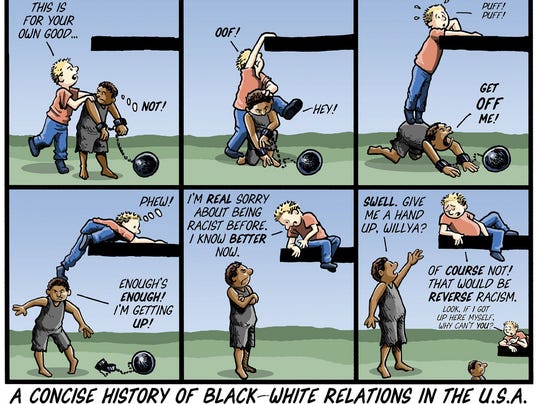Video: Washington Post
Last month, a divided Supreme Court upheld Michigan’s ban on race conscious admissions policies at public universities – reversing a lower court decision that had struck down the ban on equal protection grounds (ABC News).
With a 6-2 vote, not only were many citizens outraged, Justice Sonia Maria Sotomayor – the first Hispanic and third female justice – expressed her dissent as well.
“While our Constitution does not guarantee minority groups victory in the political process, it does guarantee them meaningful and equal access to that process. It guarantees that the majority may not win by stacking the political process against minority groups permanently, forcing the minority alone to surmount unique obstacles in pursuit of its goals here, educational diversity that cannot reasonably be accomplished through race-neutral measures. Today, by permitting a majority of the voters in Michigan to do what our Constitution forbids, the Court ends the debate over race-sensitive admission policies in Michigan in a manner that contravenes constitutional protections long recognized in our precedents,” said Sotomayor; who explained in her autobiography (My Beloved World) how affirmative action has helped her.
“400 years of slavery and almost a hundred years of legal segregation. And Brown versus Board of Education was the first time the laws of this land said that it was illegal to deny an educational opportunity to someone based on race. Now we know that a court can change the law, but it can't change the mindset. And what we found after that was some very aggressive and violent attempts to remain segregated. But we still see, today, some less of violent, but very aggressive, attempts at segregation,” said Ivory Toldson, Deputy Director of the White House initiative on Historically Black Colleges and Universities. He's also editor-in-chief of The Journal of Negro Education (NPR).
“The UCLA Civil Rights Project looks at the country's progress in addressing school desegregation. It suggests that a lot of court orders forcing school desegregation have expired. So we're seeing more segregation in large metropolitan districts now,” Martin (NPR).
“400 years of slavery and almost a hundred years of legal segregation. And Brown versus Board of Education was the first time the laws of this land said that it was illegal to deny an educational opportunity to someone based on race. Now we know that a court can change the law, but it can't change the mindset. And what we found after that was some very aggressive and violent attempts to remain segregated. But we still see, today, some less of violent, but very aggressive, attempts at segregation,” said Ivory Toldson, Deputy Director of the White House initiative on Historically Black Colleges and Universities. He's also editor-in-chief of The Journal of Negro Education (NPR).
“The UCLA Civil Rights Project looks at the country's progress in addressing school desegregation. It suggests that a lot of court orders forcing school desegregation have expired. So we're seeing more segregation in large metropolitan districts now,” Martin (NPR).
With that in mind, on a grand scheme, this issue goes even further than the college level. It’s no secret that predominantly African-American school districts are so resource deprived that in some cases, books are outdated with pages missing. So that was the real issue, leveling the playing field in terms of resources.
So it has always been about more than just race, and providing an “advantage” to minorities, but it was simply to create a leveled playing field and offer a fair advantage to a solid education to those less fortunate, as those with the money and resources to readily do so.
And when you consider the fact that now the Supreme Court has ruled that states are allowed to remove race as a factor in college admissions, we have allowed the schools to become more segregated (Martin MPR).
The resources go with the most affluent children. And what we're seeing now across the country is that as we have allowed schools to become separate, and as we've concentrated the poorest children in particularly inner-city schools, they almost always receive an inferior education.
Affirmative action, was intended to level the playing field by providing an equal opportunity for groups – minorities, women – who prior to the policy, suffered from discrimination. It has never been well received by those who didn’t benefit from it. Those opposed to it often deem it unfair.
The resources go with the most affluent children. And what we're seeing now across the country is that as we have allowed schools to become separate, and as we've concentrated the poorest children in particularly inner-city schools, they almost always receive an inferior education.
Affirmative action, was intended to level the playing field by providing an equal opportunity for groups – minorities, women – who prior to the policy, suffered from discrimination. It has never been well received by those who didn’t benefit from it. Those opposed to it often deem it unfair.
Photo: PeanutButterDelight (Blog)
However, it’s pretty ironic that some students are “grandfathered” into some universities because of legacy and no one views it as unfair. However, laws put in action to level the playing field for minorities and those with limited resources are looked upon as having some sort of “advantage”. Those opposed to desegregation and laws like affirmative action, see it as a crutch or an unfair disadvantage for whites. However, it was set in place to create an equal opportunity for minorities to have a fair shot equal in life overall.
It should be against the law to deny anybody an educational opportunity based on race, and Brown versus the Board of Education achieved that for us. It was definitely a step in the right direction however, 60 years later laws are being reviewed and reversed.









0 comments:
Post a Comment